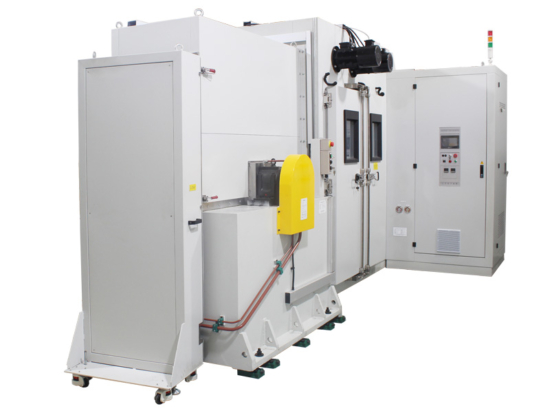Rolling resistance higher at colder temperatures – Smithers study
 Testing data for the whitepaper was gathered using the high- & low-temperature rolling resistance testing machine at the Smithers tyre and wheel testing laboratory in Suzhou, China (Photo: Smithers)
Testing data for the whitepaper was gathered using the high- & low-temperature rolling resistance testing machine at the Smithers tyre and wheel testing laboratory in Suzhou, China (Photo: Smithers)
Testing, consulting, information, and compliance services firm Smithers has produced a new whitepaper reporting the effects of temperature on tyre rolling resistance. It will soon offer the whitepaper for free download on its website.
Tyre rolling resistance is closely related to overall vehicle fuel economy or range in both ICE and electric vehicles (EVs). Currently, it is understood that rolling resistance reduction is a reliable strategy for optimising a vehicle’s fuel economy or cruising range. Many countries, regions, and manufacturers have established rolling resistance targets in order to achieve greater energy savings, fulfil ‘green’ initiatives and reduce carbon emissions.
But existing test methods and standards may not suffice to achieve a comprehensive understanding of a given tyre’s rolling resistance performance in the real world. As the automotive industry studies the range effects of cold temperatures on electric vehicles, batteries are generally highlighted as one of the key limiting factors. However, when attempting to improve range performance, all options are on the table and tyre rolling resistance performance at low temperatures became a question to be researched.
“Current rolling resistance test methods only focus on tyre performance at an ambient temperature of 24°C (75°F) or 25°C (77°F), but real-world applications span a much broader range of operation,” explains Henry He, co-author of the whitepaper and general manager of Smithers Materials Science and Engineering Division in Suzhou, China. “This paper combines theoretical analysis and experimental methods for exploring the rolling resistance of tyres at other temperatures.”
Utilising new Suzhou machinery
He and co-author Edward Zhang, lead technical engineer, gathered testing data for the whitepaper using the high- and low-temperature rolling resistance testing machine at the Smithers tyre and wheel testing laboratory in Suzhou, China. The machine was first introduced in August 2022. They conducted a series of initial tests to better understand the effects of multiple temperatures on rolling resistance performance.
“Our research shows that, theoretically, tyre rolling resistance at low temperatures is greater than at room temperatures,” shares He. “This highlights the importance and necessity of conducting rolling resistance testing at different temperatures, not just ambient temperature, to understand true vehicle fuel efficiency in a wider range of real-world conditions.”
Robust portfolio
The Smithers tyre and wheel testing laboratory in Suzhou first opened in 2011 to serve a growing market in the Asia Pacific region and support the company’s global client base. In addition to high- and low-temperature rolling resistance testing, the laboratory offers a robust portfolio of durability, resistance, and performance testing services for both tyres and wheels. The laboratory is co-located with a Smithers product testing laboratory, which opened in 2019.




Comments